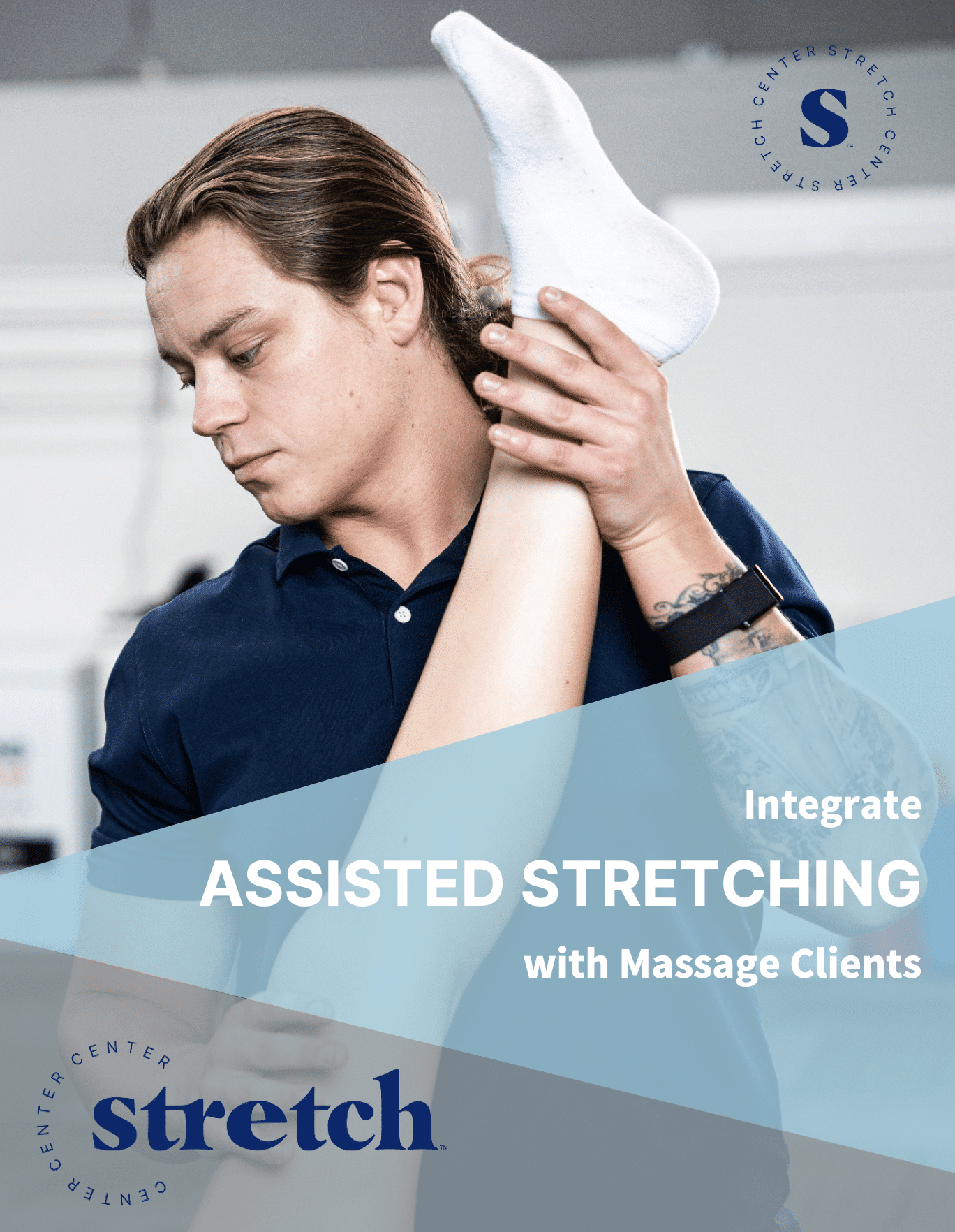A Guide for Students and Student Athletes
Back-to-school season brings a new schedule, new classes, and for many, the return of practice and competition. But between sitting through long lectures and hitting the field after hours, students are under more physical strain than most people realize. Whether you are lugging a backpack across campus, hunching over homework, or training hard for fall sports, your body takes a hit, and stretching can make a big difference.
This guide is split into two parts:
- How school affects your posture and where that tension shows up
- Stretch strategies for student athletes in fall sports
The Classroom Trap: What Sitting All Day Does to You
You sit all day. Then you go home and… sit more. The modern student lifestyle may be demanding mentally, but physically, it’s built around stillness. And that stillness adds up in the wrong places.
Common School Habits and Where You’ll Feel It
| Common School Habits | Likely Tight or Painful Areas |
|---|---|
| Slouching at a desk | Neck, mid-back, hip flexors |
| Looking down at phones/laptops | Upper traps, suboccipitals, shoulders |
| Wearing heavy backpacks | Low back, shoulders, pecs |
| Crossing legs or leaning to one side | Low back, glutes, hip rotators |
| Long periods without movement | Hamstrings, calves, lower back |
Quick School-Day Stretch Routine
Try these simple stretches between classes, during lunch, or before bed to reset your posture and stay mobile.
- Standing Hip Flexor Stretch
What it helps: Hip flexors, quads - Seated Upper Trap Stretch
What it helps: Neck and upper shoulders - Wall Angels
What it helps: Mid-back and shoulder mobility - Standing Forward Fold
What it helps: Hamstrings, low back - Wrist Flexor/Extensor Stretch
What it helps: Forearms and wrists
Student Athletes: Fall Sports Need Targeted Recovery
Once school is over, you are not done. Fall athletes grind through practices, conditioning, and travel, all while carrying classroom stress with them. Stretching helps you transition from “go mode” back into recovery while improving range of motion and reducing the risk of injury.
Let’s break it down by sport. (We have full blog breakdowns on football and cross country if you want to dig deeper.)
Football
Football players are under constant impact stress, especially linemen, linebackers, and backs. We typically see tightness in the neck, quads, hips, hamstrings, and ankles. For linemen and quarterbacks, wrists also take a beating.
Post-Practice Football Stretch Routine:
- Lying hamstring stretch with strap
- Quad stretch while lying on your side or using a wall
- Wrist extension and flexion stretch
- Standing calf stretch
- Seated neck side bend and rotation
- Supine hip rotation stretch (figure 4)
Warm-up ideas: High knees, leg swings, wrist rolls, neck rolls, walking lunges with twist
Cross Country
Runners face repetitive impact, especially in the calves, hamstrings, quads, and hips. Many also experience back tightness if their core is not supporting their stride efficiently.
Post-Run Stretch Routine:
- Standing quad stretch
- Supine hamstring stretch with towel/strap
- Hip flexor kneeling stretch
- Figure-4 glute stretch
- Standing or downward dog calf stretch
- Seated spinal twist
See our full blog on cross country runners for more recovery ideas.
Volleyball
Volleyball players need explosive hips, mobile shoulders, and stable knees. Repetitive overhead action can cause shoulder stiffness and pec tightness.
Post-Practice Volleyball Stretch Routine:
- Wall pec stretch (arm bent at 90°)
- Lat stretch using doorway or bench
- Standing quad/hip flexor stretch
- Supine hamstring stretch
- Wrist flexor stretch
- Calf stretch on stairs or wall
Soccer
Soccer players rely on constant movement and direction changes. The most common tight areas are inner thighs, calves, hips, and hamstrings.
Post-Practice Soccer Stretch Routine:
- Seated butterfly stretch
- Hip flexor lunge stretch
- Standing calf stretch
- Supine spinal twist
- Hamstring stretch lying down
- Side-lying quad stretch
Cheerleading
Flexibility demands are high in cheerleading. Bases and flyers both benefit from neck, shoulder, and back recovery.
Post-Practice Cheer Stretch Routine:
- Supine spinal twist
- Doorway pec stretch
- Hip flexor lunge stretch
- Neck side bend and rotation stretch
- Seated hamstring stretch
- Wrist extension and flexion stretches
Every Athlete is Different
The stretches in this blog are what we typically recommend for each sport based on common demands. But every athlete is different. If a player is experiencing tightness or discomfort outside these patterns, they can still benefit from trying stretches we suggest for other positions, or even better, working one-on-one with a Stretch Practitioner who can guide them based on their unique needs.
Ready to Perform Better and Recover Faster?
Students and student athletes: come visit your local Stretch Center. Whether you’re tight from class, sore from practice, or looking to stay mobile through the season, we’ll meet you where you’re at and stretch what needs it most.
Parents and coaches: want to support your student athletes? Help them book a session with a certified Stretch Center Practitioner. You can even schedule an onsite stretch event for your team or school group.
Massage therapists, personal trainers, and wellness pros: interested in serving this population?
👉 Learn to stretch professionally at stretchcenter.com/certification
CEUs available through NASM, AFAA, ISSA, ACE, NCBTMB, NPCP, and more.





